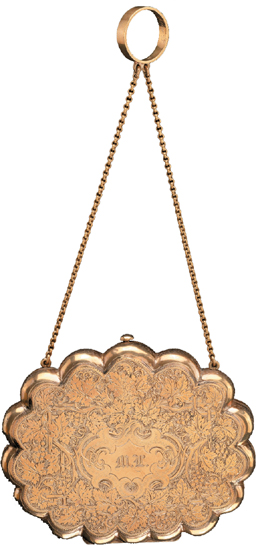 LKG
LKGALTHOUGH MARY LINCOLN AND VARINA DAVIS NEVER met, the first ladies of the United States and the Confederate States were connected through another notable woman: Elizabeth Keckly (1818–1907), the gifted African American seamstress and dressmaker who worked for them both. Keckly used her skill with a needle to purchase her freedom from slavery and, in 1860, moved to Washington, D.C., where she established a successful dressmaking business. The fashionable Varina Davis—whose husband, Jefferson Davis, served in Washington as secretary of war and subsequently as senator from Mississippi before taking charge of the Confederacy—became Keckly’s foremost client. Keckly later recalled that she went to the Davis house every afternoon to work for that family of “late risers.” She was surprised when Varina invited her to leave Washington with the Davises, who took up residence at the Confederate White House in Richmond in the summer of 1861. Keckly chose not to return to Virginia, where she had been born into slavery, and decided instead “to cast my lot among the people of the North.”
Keckly’s reputation as Varina Davis’s dressmaker, and her promise of fine work at reasonable rates, won her the job as Mary Todd Lincoln’s “modiste,” fulfilling a cherished ambition to work at the White House in Washington. Addressed as “Lizabeth” by the first lady and as “Madame Elizabeth” by the president, Keckly became a valued and trusted member of the Lincoln household. For the next four years, she shared daily intimacies with the first family as she brushed the president’s hair before receptions and helped care for his dying son, Willie. But it was Mary who relied on her most. While fashioning clothes for the first lady and dressing her, Keckly soothed Mary, who fretted about money, politics, and Washington gossip, of which she was often the target. Keckly, now a member of the city’s black middle class, drew the first lady’s attention to the plight of the many impoverished African Americans who flocked to Washington seeking freedom, shelter, or work. At war’s end, she traveled with Mary to Richmond and toured the Confederate White House just a week after the Davises evacuated that mansion. The visit took place barely a week before Abraham Lincoln was assassinated. His death cast his widow into mourning so deep and desperate that not even Keckly could do much to comfort her.
Elizabeth Keckly recounted her experiences with the two first ladies in her 1868 memoir, Behind the Scenes. Although she wrote the book hoping to shine a sympathetic light on Mary Lincoln, it drew further attention to the former first lady’s extravagance and her notorious attempt in 1867 to cover her debts by selling clothes and jewels from her copious White House wardrobe. She felt betrayed by the book’s personal revelations. Mary Lincoln never again spoke to the woman she had once called “my best and kindest friend.”  LKG
LKG

WHITE HOUSE COUTURIER Elizabeth Keckly, pictured around 1890, received President Lincoln’s inkwell (FIRST IMAGE) from Mary Lincoln, for whom she made this purple velvet dress (SECOND IMAGE).
VARINA DAVIS Shortly before her husband became leader of the Confederate States, Varina Davis (1826–1906), portrayed at right in 1849, told a friend: “I would rather remain in Washington and be kicked about, than go south and be Mrs. President.” Although she played her role as the South’s first lady dutifully, her abiding affection for friends and relatives on the Union side led some to question her devotion to the Confederacy. After the war, the Davises became embodiments of the “Lost Cause.” Her jewels, including a crown-shaped ruby brooch presented to her by the Women of the Confederacy in 1902, reinforced the image of fallen Southern royalty.

Howell crystalline wedding set of necklace, brooch, and bracelet

Diamond and ruby brooch

Emerald and diamond engagement ring
MARY TODD LINCOLN “I must dress in costly materials,” the first lady told Elizabeth Keckly. “The people scrutinize every article that I wear with critical curiosity.” Indeed, Mary Lincoln (1818–1882), pictured at right by Mathew Brady in 1861, drew scathing criticism. Her manners, clothing, costly accessories, and Confederate relatives in Kentucky were all fodder for gossip. Meanwhile, her charitable acts, including visits to wounded soldiers and support for African American war refugees, went unnoticed. Even after her husband’s death, public sympathy was tempered by the belief that she was not conducting herself as Abraham Lincoln’s widow should.

Monogrammed gold lorgnette


Monogrammed gold evening purse

Silver coffee and tea service